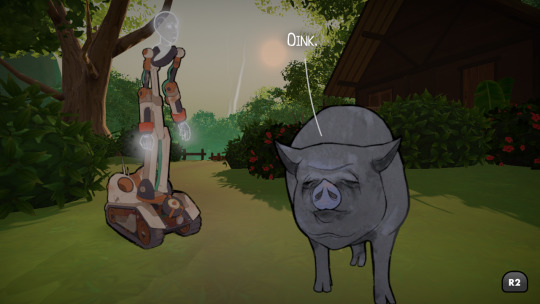
Featured Blog | This community-written post highlights the best of what the game industry has to offer. Read more like it on the Game Developer Blogs.
The Painful Art of Cutting
Writing game narrative is hard; cutting it is harder. But good, brutal editing is crucial to both managing your scope and delivering a tight story.

This blog post was originally published on the Heaven's Vault development blog. Heaven's Vault is an archaeolgical adventure game being made by inkle, the creators of 80 Days and the Sorcery! series.
It’s no secret that Heaven’s Vault is our most complex game to date. Real-time, non-linear, always-reacting storytelling in a fully explorable 3D world isn’t something you just stumble on. It’s also our most beautiful game yet; and a huge part of that are the environments. We’ve shared a little peek of the forest moon of Maersi already…

… but there are desert digs, overgrown palaces, ancient covered markets, towns, cities… there’s a lot of stuff. And somehow we have to build it all before we can release the game.
Luckily, we recently wrote the ending. We now know exactly how and where the game will stop. That means we know which bits of the middle really matter, and which just seemed like interesting ideas at the time. We know which bits are foreshadowing, and which bits are fluff.
So now’s the time to cut. Now that we're know where we're trying to get, now's the time to be honest about which diversions work, and which don't.
Cutting isn't easy
Cutting is hard, right up until you do it. Everything, especially in a game this tightly bound, seems like it absolutely needs to be there - until you take it away, and realise it only had the appearance of real content. If something was easy to cut, after all, you would have already done it.
So the best things to cut are the sections which "have great potential" - because having great potential, at a late stage in the project, means you've failed to execute.
Cutting isn't cheap
Cutting is also expensive: in the last few days we've thrown away weeks worth of work, in greyboxing, writing, scripting, camera design, play-testing… The hope is all of that work has been distilled down somehow and that’s what left is richer and juicier than it would otherwise have been, but it’s impossible to know for sure.
But not cutting is even more expensive. Greybox levels take weeks to finalise - to fill with props and colour, to light, and of course there’s additional writing, scripting, and all the other things that take a decent level and make it great. As a rule we try not to cut anything that’s past the greybox stage - there’s always freedom in what you cut and how. (We have in one instance cut a section of an existing level and used it to make a new level.)
So far in the last two weeks we’ve cut two entire levels, mixing what content we can around the other sites. Those places have got richer, and the need to pad out the weaker location has gone away.
Cutting is about finding focus
With our previous games we never needed to cut like this - we cut lines and words, sure, but whole cities, whole towns - never. We just hid them instead. The key advice in creating 80 Days was “Always write everything”: if you can think of something, write it; we’ll need it somewhere. For instance, take a look at this screenshot of the 80 Days content prototype, from about halfway through development:

That’s about 60% of the final game - but then 80 Days is a game that actively defies focus; that challenges the player to accept their will always be something that goes unseen. It's a game about how the path unfollowed makes the path you're on more precious.
For Heaven’s Vault the "always write everything" approach has gotten us this far - to a well-developed world, and a terrifying scope problem - but it’ll take us no further. But a scope problem is an opportunity in diguise. It means we’ve bought ourselves a huge stockpile of raw ideas, of moments, concepts and beats.
We’ve got a huge old pile of veg to turn into stock here: with the right cuts, we can make this game nothing-but-good.
We've got options - if something in the game is repetitive, we can swap out an instance of it for something fresh.
We've got control over pacing - if we want to slow a section down, we've got content we can bring in to do that.
And every cut we make is real, measurable progress: it increases the percentage of the game that’s complete. A day when we cut a level is our most productive day. (Although when our AI overlords start applying this kind of logic, we’re all in big trouble.)
So cutting is hard, but vital; and we think we’ve made some brilliant cuts. You’re going to love the bits you don’t get to see.
Read more about:
Featured BlogsAbout the Author(s)
You May Also Like









